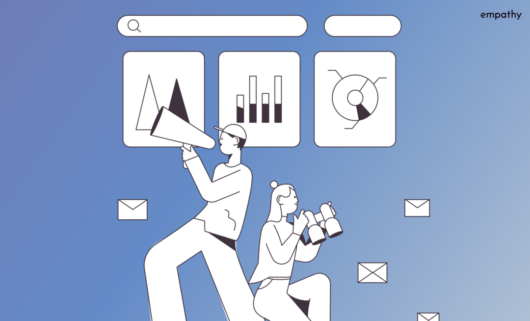At Empathy, we use Behavioral Design and Gamification as tools to understand why people make decisions and how we can assist them in making better ones guided by ethical principles. Similarly, we employ these tools to enhance user experiences, with gamification playing a vital role in designing effective learning and feedback strategies for specific products or services.
But what exactly is the role of gamification in strategic design? To delve into this, let’s start by discussing gamification with an expert in the field. Meet Javier Velásquez, a game designer and the founder of two companies in the industry: Azahar, which has been designing board games for over eight years, and Free To Play, a laboratory exploring gamification and human motivation. According to Javier, gamification has a distinct purpose:
“Meaningful gamification focuses on the principle that games are a learning system, so the player who enters a gamification process should leave the game better than when they entered. This is the clearest, most concrete, and most beautiful definition of what meaningful gamification is.”
As Javier highlights, meaningful gamification aims to facilitate learning about a specific behavior. This could involve developing skills, grasping processes, accessing services, reaching goals, or personal growth. The “meaningful” aspect comes from ensuring that the learning process benefits the player, i.e., the user, rather than solely serving a company’s interests.
The essence of gamification lies in utilizing design elements that are commonly used in games to create objectives and motivate people to accomplish them, all while maintaining an enjoyable experience. However, if a system offers medals or rewards without any meaningful purpose, it doesn’t qualify as gamification, or at least not meaningful gamification.
According to Javier, gamification can be understood on three main levels:
- Basic Level: Gamification involves integrating game mechanics, elements, and principles into non-game contexts, such as improving processes, facilitating learning, and enhancing marketing in areas that aren’t typically associated with games.
- Intermediate Level: Gamification serves as a tool that employs playful thinking to address serious problems or challenges, particularly those tied to issues of motivation. It tackles questions like how to motivate individuals or how to facilitate change and learning.
- Advanced Level: Gamification is recognized as a design discipline, specifically within game design. In this realm, designers draw insights from games to apply them to other services, utilizing knowledge from behavioral economics, attention psychology, and systemic thinking.
These levels reflect a game designer’s or gamification expert’s proficiency in crafting meaningful strategies. The highest level, the most intricate, views gamification as a design discipline that involves acquiring specific knowledge and skills to create decision-making structures using playful tools.
Approached as a design discipline, gamification provides alternatives for driving change, primarily through learning. Javier emphasizes that “to generate the learning process, the first thing that needs to be done is to expand the decision spectrum and allow players to do many things, including the possibility of making mistakes. The game works from a scenario of uncertainty, and through feedback, the brain begins to evaluate the best way to solve the problems.”
In this context, gamification empowers users to arrive at conclusions through trial and error, making change intrinsic rather than external. It’s about granting users the freedom to make decisions autonomously, tackling challenges head-on, and seeking solutions. This genuine engagement leads to the learning process. Although results may take more time in gamification, they tend to be longer-lasting.
Javier Velásquez concludes by outlining his design process, which centers on the BEM Model (Behavioral Experiential Meaningful). This methodology introduces additional motivators beyond those found in other approaches, acknowledging that humans seek pleasure and satisfaction in their work. These extra motivators are hedonism, efficiency, and productivity.
-
Define the Motivators:
The initial step involves grasping the client’s intention behind altering their product, service, experience, or procedure. This is viewed through the lens of each motivator. For instance, why is this change significant for a user driven by mastery versus one motivated by identity? This phase aims to uncover the goals that inspire people towards the desired behavior.
-
Translate Motivators into Game Objectives:
Next, these motivators are transformed into game objectives. Players or users are informed of what’s expected of them within the game (or the service/product). For instance, if a game presents eight medals and a user has collected five, the motivation to collect all eight medals becomes a driving force. This step outlines the path to follow.
-
Establish Feedback Loops:
The final step revolves around creating feedback loops. These loops are mechanisms that encourage users to repeat actions within the game, building a cyclical engagement. The continuous feedback keeps users engaged until they can apply the learned behavior to real-life situations using their skills, knowledge, and decision-making abilities.
Each gamification system is meticulously crafted to foster learning and guide users in understanding how game mechanics shape their behavior. Consequently, gamification functions as a design tool to motivate and mobilize individuals towards their desired outcomes with a particular product or service.
If you’re curious about getting started with gamification for your projects or initiatives, just drop us a message using our contact form! We’re here to help and excited to chat.

